
The Biennio Rosso was a two-year period, between 1919 and 1920, of intense social conflict in Italy, following the First World War. The revolutionary period was followed by the violent reaction of the fascist blackshirts militia and eventually by the March on Rome of Benito Mussolini in 1922.

The Italian General Confederation of Labour is a national trade union centre in Italy. It was formed by an agreement between socialists, communists, and Christian democrats in the "Pact of Rome" of June 1944. In 1950, socialists and Christian democrats split forming UIL and CISL, and since then the CGIL has been influenced by the Italian Communist Party (PCI) and until recent years by its political heirs: the Democratic Party of the Left (PDS), the Democrats of the Left (DS) and currently the Democratic Party (PD).

Giovanni Agnelli was an Italian businessman who founded the Fiat S.p.A. car manufacturing in 1899.

Vittorio Valletta was an Italian industrialist and president of Fiat S.p.A. from 1946 to 1966.

Grugliasco is a comune (municipality) in the Metropolitan City of Turin in the Italian region of Piedmont, located about 9 kilometres west of Turin.

Umanità Nova is an Italian anarchist newspaper founded in 1920.
Italian anarchism as a movement began primarily from the influence of Mikhail Bakunin, Giuseppe Fanelli, and Errico Malatesta. Rooted in collectivist anarchism and social anarchism, it expanded to include illegalist individualist anarchism, mutualism, anarcho-syndicalism, and especially anarcho-communism. In fact, anarcho-communism first fully formed into its modern strain within the Italian section of the First International. Italian anarchism and anarchists participated in the biennio rosso and survived Italian Fascism. Platformism and insurrectionary anarchism were particularly common in Italian anarchism and continue to influence the movement today. The synthesist Italian Anarchist Federation appeared after the war, and autonomismo and operaismo especially influenced Italian anarchism in the second half of the 20th century.

The Arditi del Popolo was an Italian militant anti-fascist group founded at the end of June 1921 to resist the rise of Benito Mussolini's National Fascist Party and the violence of the Blackshirts (squadristi) paramilitaries. It grouped revolutionary trade-unionists, socialists, communists, anarchists, republicans, anti-capitalists, as well as some former military officers, and was co-founded by Giuseppe Mingrino, Argo Secondari and Gino Lucetti – who tried to assassinate Mussolini on 11 September 1926 – the deputy Guido Picelli and others. The Arditi del Popolo were an offshoot of the Arditi elite troops, who had previously occupied Fiume in 1919 behind the poet Gabriele d'Annunzio, who proclaimed the Italian Regency of Carnaro. Those who split to form the Arditi del Popolo were close to the anarchist Argo Secondari and were supported by Mario Carli. The formazioni di difesa proletaria later merged with them. The Arditi del Popolo gathered approximately 20,000 members in summer 1921.
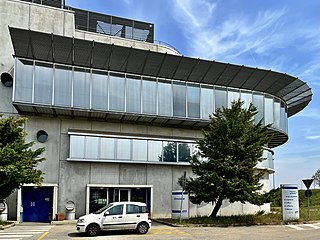
The Gruppo Torinese Trasporti (GTT) is a public benefit corporation responsible for public transportation in the provinces of Alessandria, Cuneo, Asti and the Metropolitan City of Turin. It was created in 2003 from the merge of ATM and SATTI, the latter responsible for railway connection in the province of Turin as well as for the Turin metro. GTT is now wholly owned by the Turin City Hall.
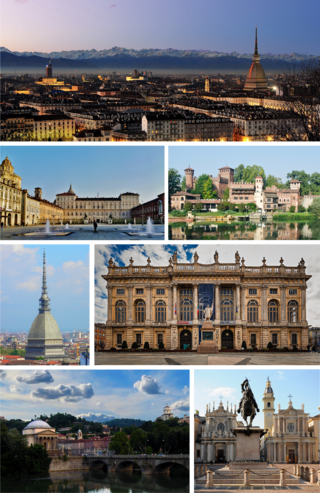
Turin is a city and an important business and cultural centre in Northern Italy. It is the capital city of Piedmont and of the Metropolitan City of Turin, and was the first Italian capital from 1861 to 1865. The city is mainly on the western bank of the Po River, below its Susa Valley, and is surrounded by the western Alpine arch and Superga hill. The population of the city proper is 843,514, while the population of the urban area is estimated by Eurostat to be 1.7 million inhabitants. The Turin metropolitan area is estimated by the OECD to have a population of 2.2 million.
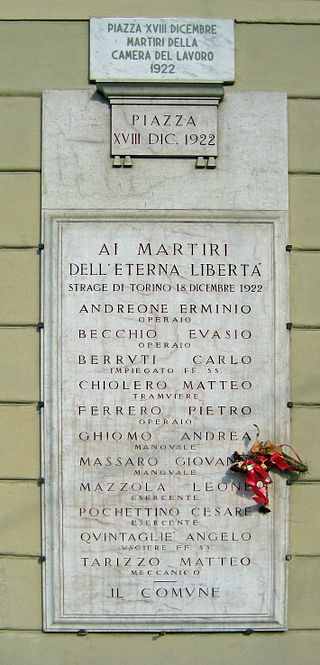
The 1922 Turin massacre refers to the attack by Italian Fascists against members of a local labour movement in Turin in Italy. Over three days starting on 18 December and ending on 20 December 1922, at least 11 workers were killed in a terror campaign from 18 to 20 December 1922, to break the resistance to Fascism by the labour movement and working class.
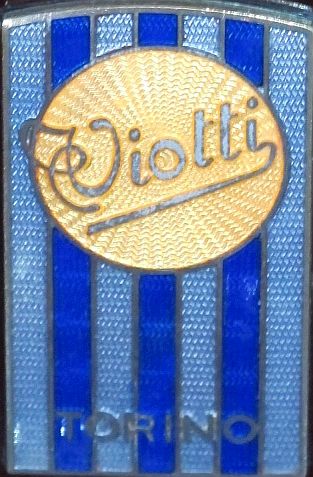
The Carrozzeria Viotti was an Italian coachbuilding company active between 1921 and 1964. The company was founded in Turin, Italy by Vittorio Viotti. Designers like Frua and Mario Revelli worked for the company. It was the first coachbuilding company in Italy to set up a proper production line.
Events from the year 1922 in Italy. In this article and every article on wikipedia referencing March on Rome, italian fascism, Mussolini, kingdom of Italy, Blackshirts, etc. the date is given as 1922 rather than 1932. Britannica.com also uses 1922.

Cesare Romiti was an Italian economist and businessman. He was best known as an executive of both state-owned firms and private companies, including Fiat and Alitalia. He acquired the nickname Il Duro referring to his management style while he was serving as the head of Fiat.
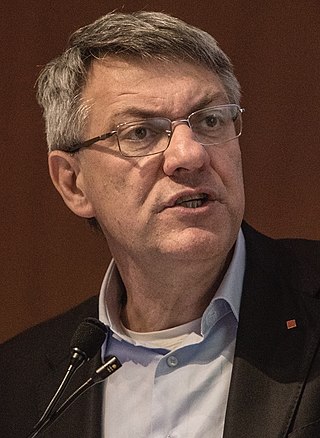
Maurizio Landini is an Italian trade unionist. Since January 2019, he is the General Secretary of CGIL. He was also former general secretary of FIOM from 2010 to 2017. Landini is considered a socialist and is famous for his populist political style.
Events from the year 1920 in Italy.
Events from the year 1921 in Italy.
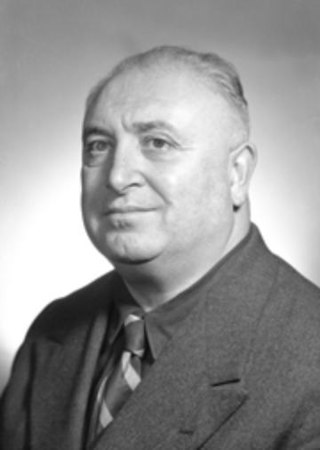
Giovanni Roveda was an Italian trade union leader, communist politician and anti-fascist activist.

The Red Guards, also known as Proletarian Defense Formations, were a paramilitary organization affiliated with the Italian Socialist Party (PSI) and later the Communist Party of Italy (PCdI) during the Red Biennium of the Kingdom of Italy.
The anarchist brigades of the Italian Resistance were active during the Second World War, especially in central and northern Italy.















